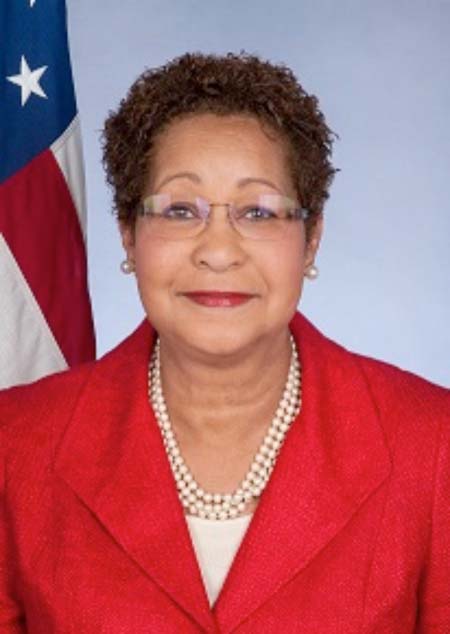
Across the United States, Black History Month is observed every February, and it has been one of the most widely commemorated memorial months.
The aim of Black History Month is to expose the harmful effects of racial prejudice and to recognise the significant contributions made by people with African heritage, including artists, musicians, scientists, political figures, educators, and athletes, among others.
Yesterday’s symposium, under the theme: “African Contributions to American Progress” explore the many positive contributions Africa and her people have made to American development throughout her history.
Speaking at the symposium, the United States Ambassador to The Gambia, C. Patricia Alsup, said that in the United States and now in other countries as well, February is a time when they reflect upon the challenges and triumphs of African-Americans throughout the course of their history.
“The contributions of African-Americans and of their ancestors who were brought unwillingly to North America as a result of the Trans-Atlantic Slave Trade are countless,” she said.
She also said Africans and African-Americans have played key roles in the development of the United States, from the early days of the slave trade, to the March on Washington led by Dr Martin Luther King Jr., to the election- and re-election of President Barack Obama.”
She spoke on the history of slavery in the United States, saying: “In the United States, slaves were utilized by plantation owners growing tobacco, rice, indigo, and cotton.”
By 1890, she added, nearly two million slaves of African descent worked on cotton fields and plantations in the southern region of the U.S.
Enslaved workers toiling in cotton fields built the economy of the United States, she stated, adding that the industries within the country and Europe relied on plantation-grown cotton.
As cotton plantations expanded throughout the South, banks and financial institutions in the northern cities supplied funding and investment capital to plantation owners, she added.
As millions of slaves were growing the United States economy in the cotton fields, others were building the nation’s infrastructures; and when the railroad came to the United States, slave labour was used to build thousands of miles of tracks across the nation.
Ambassador Patricia Alsup also shared the story of an African-American man: “Elijah McCoy, an African-American man who was the free son of escaped slaves, had a significant impact on the early days of railroad.”
“He developed mechanisms for oiling the steam engines of locomotives,” she stated, saying that before Mr McCoy’s invention, trains needed to stop frequently to be oiled and undergo four routine maintenances.
“The ‘automatic lubricator’ brought innovation to the American railroad, allowing trains to run at higher speeds for longer amounts of time. The invention was so successful that many companies tried to copy it and sell their own versions,” she said.
“In the United States we have a phrase, ‘the real McCoy’, which is the metaphor for ‘the real thing’ or ‘the genuine article’,” she noted.
Ambassador Alsup also recalled the days when she was growing up in the South of the United States, saying that in the 50s and 60s, “schools were segregated, the restaurants were segregated, and even the beaches were segregated”.
“When my father filed a lawsuit against the city where I grew up to desegregate the city swimming pool, the city destroyed the swimming pool rather than allow black people to use it. But the Civil Rights Movement eventually changed all that,” the US Ambassador said.
Speakers at the event included John Charles Njie, who read out the Martin Luther King Jr. “I Have A Dream” citation.




